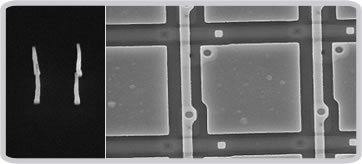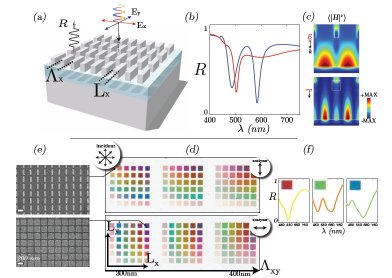Nanophotonics and Metamaterials
Hybrid technologies offer a great potential to expand the horizons of current optical systems. The combination of optically anisotropic materials such as liquid crystals with unusual conductors and morphologies such as arrays of vertically aligned carbon nanotubes and nanopillars have great potential as new nanophotonic devices. We have already demonstrated reconfurable graded index lens arrays with pitches from 1-100um using this technology, but we are only just beginning to understand both their operation and applications. When the length scales and separations get below the wavlength of the light, there are also the exciting possibilies created by plasmonic resonance and metamaterial effects which can be harnessed in the optical regime. There are may different research themes in this area from basic materials studies, through to advanced theory and applications whicb are all currently active in this area.
The ability to control light on the nanometre length scales is a very exciting new area which can be expoited in many different applications from optical filters in hyperspectral imaging to novel sensing systems. Arrays of nanometre scale structures (often referred to as metasurfaces) allow us to harness interesting physical phenomena such a surface plasmonic resonances opening up a whole new toolbox of techniques which allows the control of light in terms of its intensity, phase, wavelength and polarisation. This combined with optical diffraction is creating a whole new class of optical devices.



